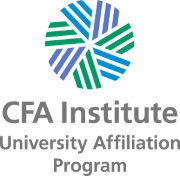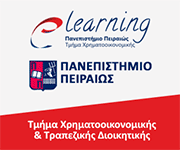Statistics I
Course Name: Statistics I
Teachers: Georgios Psarrakos
School: Finance and Statistics
Department: Banking and Financial Management
Level: Undergraduate
Course ID: ΧΡΣΤΑ01 Semester: 1st
Course Type: Core Course
Prerequisites: –
Teaching and Exams Language: Greek
Course Availability to Erasmus Students: No
Course webpage: –
Specific Teaching Activities |
Weekly Teaching Hours |
Credit Units |
Lectures |
4 |
7,5 |
Course Content
- The basic sections that will be presented are:
- Empirical Univariate Frequency Distributions: Discrete and Continuous Distributions of Frequencies and Cumulative Frequencies – Graphic Presentation Methods of Qualitative and Quantitative Statistical Data – Frequencies and Cumulative Frequencies Histogram
- Univariate Populations Parameters: Central Tendency Parameters – Central Position Parameters – Dispersion Measures – Data Trasformation with Encoding – Skewness Parameters – Frequency Distribution Moments – Kurtosis Parameters
- Fundamental Notions of Events: Random Experiment – Sample Space – Events – Calculus with Events
- Combinatorics: Permutations of ν Objects – Arrangements With or Without Repetition of ν Objects Taken μ – Combinations With or Without Repetition of ν Objects Taken μ – Newton’s Binomial
- The Notion of Probability: Classic, Statistical and Axiomatic Definition of Probability – Properties of Probabilities – Conditional Probability – Independent Events – Total Probability Theorem – Bayes’ Rule
- Univariate Random Variables: Discrete and Continuous Random Variable – Probability Function and Density Function – Expectation – Cumulative Probability Distribution Function – Variance – Moments of Various Orders – Median and Quantiles – Skewness and Kurtosis – Moment Generator, Generator and Characteristic Function
- Theoretical Distributions: Bernoulli – Binomial – Geometric – Poisson – Uniform – Exponential – Normal – Lognormal
- Two-Dimensional Random Variables: Discrete and Continuous Random Variables – Joint Probability Function and Density Function – Independent Random Variables – Mixed Expectation – Cumulative Probability Distribution Function – Marginal Probability Function and Density Function
Teaching Results
This course constitutes an introduction to Descriptive Statistics and Probability Theory. The course targets to present the fundamental tools of these two branches of Statistics, which are applicable to the construction of numerous scientific models. The knowledge of these Statistical Analysis techniques constitutes a fundamental skill that allows us to quantify real-life economic and financial problems, explore them by analyzing their available numerical data, and finally reach reasonable conclusions and future decisions.
Upon successful completion of the course the student will be able to:
1) Has an understanding of the basic concepts of Descriptive Statistics and Probability Theory.
2) Has knowledge of the basic tools and techniques of Descriptive Statistics and Probability Theory.
3) He is able to use Descriptive Statistics and Probability Theory methodologies in the Financial Science course.
Skills
- Decision making
- Group work
- Promote free, creative and inductive thinking
Teaching and Learning Methods - Evaluation
Lecture: Ιn Class
Use of Information and Communication Technologies: —
Teaching Analysis:
Activity |
Semester Workload |
Lectures |
50 |
Group work |
25 |
Practice Exercises that focus on the application of methodologies |
25 |
Independent Study |
87.5 |
Total |
187.5 |
Student Evaluation:
Written final exam (100%) that includes development topics.
Recommended Bibliography
– Recommended Bibliography:
- Kiochos, P., and Kiochos, A. ‘Statistics for Business and Economics’, Kiochos publishing, Athens 2015.
- Papaioannou, T. ‘Introduction to Probability’, Stamoulis Publishing, 2000.
– Related scientific journals:




